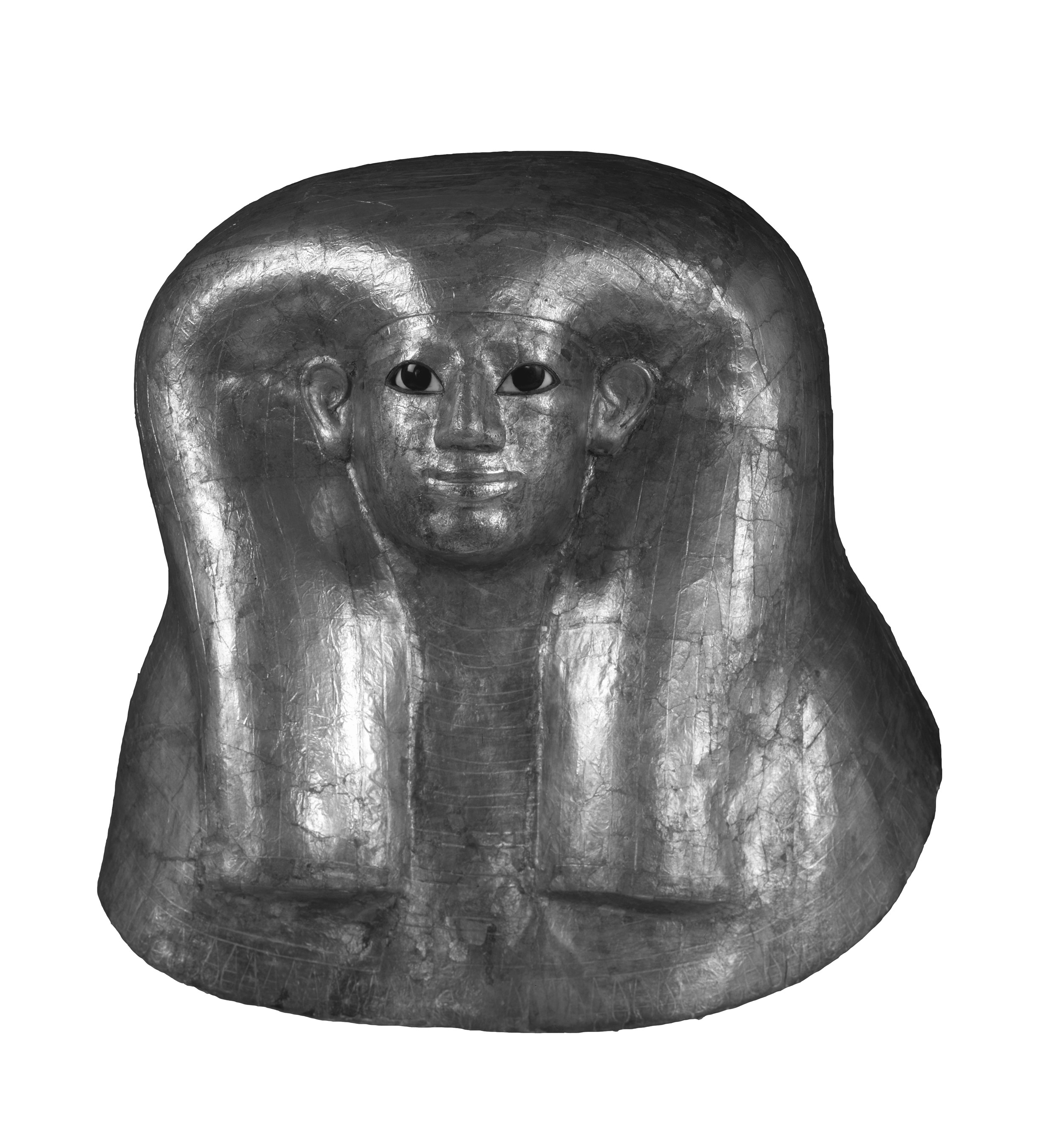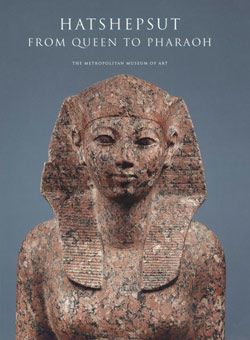Funerary mask of Hatnefer
New Kingdom
In 1936, the Museum's Egyptian Expedition discovered a rock-cut tomb on a hillside just below the offering chapel of Senenmut, one of Hatshepsut's best known officials. The tomb had been prepared for the burial of Senenmut's mother, Hatnefer, who had died in her 70s, early in the joint reign of Hatshepsut and Thutmose III. By this time, Senenmut had become an important official, and he could provide a comparatively rich burial for his mother, including this gilded mummy mask, an exquisite heart scarab, and a canopic box. She was also buried with several fine pieces of personal jewelry.
Hatnefer's small burial chamber also contained the reburial of her husband, Ramose, who had died years earlier in his mid-30s. In addition, there were two wooden coffins containing the unidentified mummies of three women and four children who were probably members of the same family. Some personal items and simple grave goods had also been placed in the coffins. It appears that Senenmut took the event of his mother's death as an opportunity to move other relatives from their original graves to Hatnefer's tomb where their spirits could benefit from the funerary gifts provided for her burial. These goods included chests of linen cloth, stone and pottery jars containing animal fat and vegetable oil, baskets of food, spoiled linen, and personal belongings.
Hatnefer's mummy mask was molded from cartonnage, a material similar to papier-mache, but made with layers of linen and gesso. The mask was then overlaid with gold foil. The eyes are inlaid with Egyptian alabaster and obsidian set in ebony sockets.
#3390. Funerary mask of Hatnefer
This image cannot be enlarged, viewed at full screen, or downloaded.
This artwork is meant to be viewed from right to left. Scroll left to view more.





